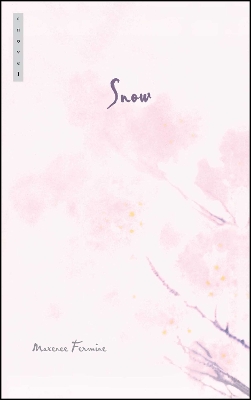
Yuko Akita had two passions.
Haiku
and snow.
It is April 1884 and Yuko Akita has reached his seventeenth birthday on the Island of Hokkaid in the North of Japan. The time has come to choose his vocation, warrior or monk, but against the wishes of his father, Yuko settles on a third option: he will be a poet. Yuko begins to write the seventeen-syllable poems we know as haiku--all celebrating the beauty of snow, his one great subject.
One day, the Imperial Poet arrives from the Emperor's court. He has heard about the beauty of Yuko's poems and has come to meet the young poet himself. While agreeing the poems have a music all their own, the Imperial Poet notes that lacking color, Yuko's poems are destined to remain invisible to the world. If the young poet is to learn color, he must study with the great artist Soseki in the south of Japan.
Yuko sets off on a treacherous journey across the whole of Japan. Cold, hungry, and exhausted, he encounters a vision that will forever change his life. It is a woman, frozen in the ice. With pale gold hair, ice blue eyes and a face as white as snow, the dead beauty will obsess Yuko. Who was she? How did she come to meet her death in the depths of his beloved snow?
Arriving at Soseki's door, Yuko is shocked to discover that the great master of color is blind. He will gradullay come to learn that color is not something outside of us, but within us. He will also learn about his master's Samurai past...and Soseki's link to the woman in the snow. It is a beautiful love story which will have its echo in Yuko's own as he finds his own, living, daughter of snow....
With stunning visual images created out of minimalist prose, Snow is as delicate and inspiring as the haiku poetry it celebrates and emulates. A swift and refreshing read, the novel treats readers to a gorgeous love story while gently floating ideas such as what is the nature of art and perception? What is the place of passion in art and in life? Highly romantic and gracefully written, Snow is destined to become a cult classic.
"And why do I need to know about the art of tightrope walking?"
Soseki put his hand on the young man's shoulder, as he had done a month before.
"Why? Because to write, is to feel your way step by step along a thread of beauty. Along the thread of a poem, or of a story unfolding on a sheet of silk. For the poet, like the tightrope walker, must go forward, word by word, page after page, along the path of a book. And the most difficult thing is not that you must keep your footing on the rope of language, with only a pen for balance; nor to keep going straight ahead, when the way is blocked by the sudden drop of a comma, or the obstacle of a full stop. No, the difficulty for the poet is to stay on the rope that is writing, to live every moment without losing sight of his dream, and to never come down, not even for a second, from the rope of the imagination."
Reading updates
-
Started reading
-
11 May, 2009:
Finished reading
-
11 May, 2009:
Reviewed
